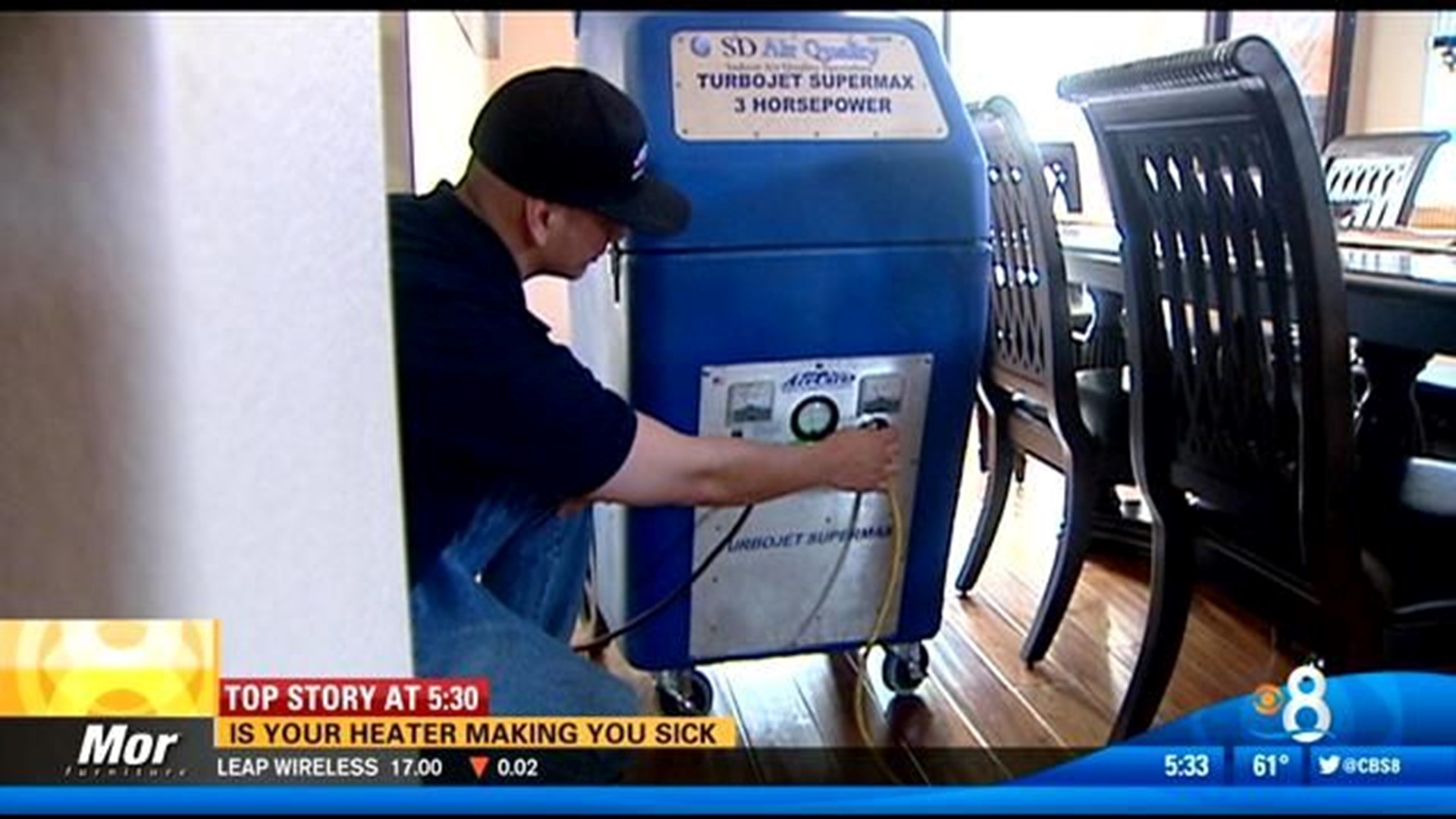SAN DIEGO (CBS 8) - With the recent cold snap, many San Diegans are switching on their furnaces for the first time in months to keep warm.
We all know some of the dust and debris that fills the vents when not in use can be a fire risk. But some of that stuff can actually make you sick. Most of us are turning up the thermostat, but did you know you're supposed to do the opposite -- opening up your doors and windows to let the cold air in?
Doctor Shawn Evans, chief of staff and emergency physician at Scripps Memorial Hospital La Jolla, says turning on the heat can be a health hazard.
"In San Diego, ducts used 2 to 3 times a year, basically a tube collects particle, debris, circulated air, elements, so it's a great little culture that you're flushing out into the entire environment," he said.
He says getting some fresh air into your home during the day is key.
"Keep windows open, close it at night, then use the air purifier. That helps to keep good circulated air in there," he said.
Evans says people with allergies and asthma should consider closing the vents in their bedrooms and turning off the head if they suddenly feel sick.
"If someone has, after having used heating or AC, watery eyes, irritation, sneezing, itchy throat or exacerbation of underlying lung disease, it's probably worth keeping it off at the time and actually having those ducts looked at or commercially inspected," he said.
Companies like SD Air Quality work to vacuum out the dust trapped in your ducts.
"It's one of our busiest times of the year," owner Jonathan Haroch said.
Haroch recommends when you turn on your furnace for the first time each season, do it with your windows open during the day, allowing the polluted air to escape. Change your filters about four times a year or hose them down if you have washable filters. One last line of defense is to use nasal saline or a nasal gel.
"It helps to protect the mucous lining and invariably it helps to make it more resistant to a number of different things that can then serve as a penetration bacterium, mold or virus," Evans said.
One final indoor hazard is carbon monoxide poisoning, so make sure you have a carbon monoxide detector near your natural gas source, and one outside your bedrooms.
To make sure your furnace and other natural gas appliances are not emitting carbon monoxide, you can call SDG&E to schedule a free appliance check.

